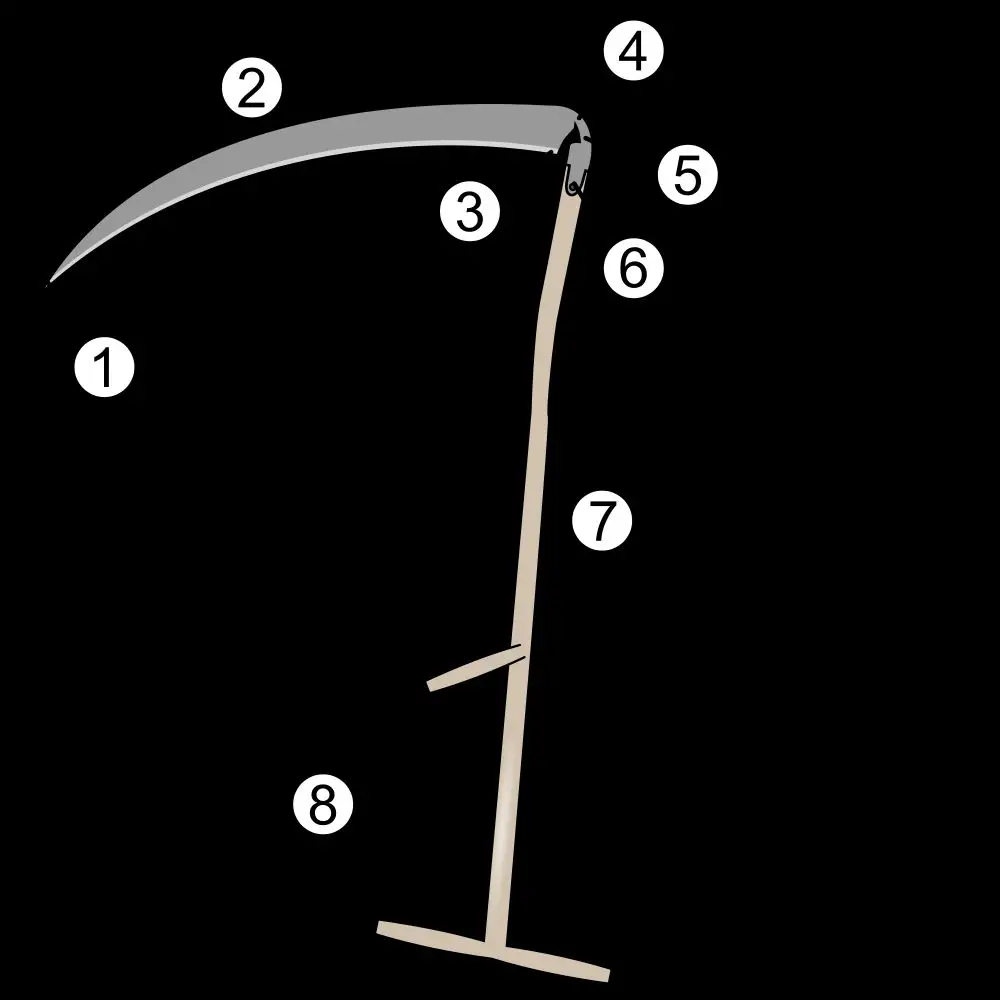tırpan
Türkçe tırpan kelimesinin İngilizce karşılığı.n. scythe
Kısaca: Tırpan bazı buğdaygiller ve baklagiller gibi tarla bitkilerini hasat etmekte kullanılan bir tarım aletidir. sırasıyla at-sığırların çektiği hasat makineleri ve hasat-harman makinelerinin kullanımına başlanmasıyla geçerliliğini yitirmiştir. ...devamı ☟






Tırpan bazı buğdaygiller ve baklagiller gibi tarla bitkilerini hasat etmekte kullanılan bir tarım aletidir. Sırasıyla at-sığırların çektiği hasat makineleri...
Tınaz Tırpan (d. 28 Nisan 1939), Fenerbahçe genç takımında yetişen Tırpan, Fenerbahçe'de ve çeşitli anadolu takımlarında top koşturmuş, teknik direktör...
Tınaz Tırpan, Ankaragücü, Fenerbahçe, Kişi, Taslak, Türk Milli Takımı, Jeju United FCSabri Tuluğ Tırpan (d. 1970, İstanbul), çağdaş Türk müziği bestecisi Senfonik müzik, sahne müziği, caz müziği, film müziği alanlarında eserler vermektedir...
Öcü) 1970 TRT Sanat Ödülleri (Tırpan) 1970 TRT Sanat Ödülleri (Sınırdaki Ölü) 1971 Türk Dil Kurumu Roman Ödülü (Tırpan) 1974 Sait Faik Hikâye Armağanı...
Fakir Baykurt, 11 Ekim, 15 Haziran, 18 Nisan, 1929, 1943, 1945, 1948, 1954, 1955, 1958sediri (Calocedrus) Yalancı servi (Chamaecyparis) Japon çamı (Cryptomeria) Tırpan ağacı (Cunninghamia) Servi (Cupressus) Diselma Fitzroya Fokienia Glyptostrobus...
Servigiller, Ardıç, Ağaç, Bilimsel sınıflandırma, Bitki, Cins, Doğu mazısı, Mazı, Pinales, Pinophyta, Pinopsidave ölüm ile ilgili korkularını temsil etmektedir. Ölüm bir tırpan tutmaktadır, bu tırpanı herkesi kendi gibi yapmak için kullanmaktadır. Tabloda insanlığın...
işi yapmakta kullanılan fiziksel nesneler (örneğin çekiç, orak, saban, tırpan vb.) için kullanılmakla birlikte, bir sanatı uygulamakta kullanılan nesneler...
Alet, Hayvan, Otomobil, Taslak, Wikimedia Commons, Çekiç, İnsaniçin, bu yükü taşımakta zorlanan ve kızan Gaia, oğullarından Kronos'a bir tırpan verip tanrının önce cinsel organlarını kesmiştir. Akan meni ile Gaia hamile...